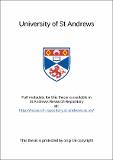Files in this item
The endocrine control of renal function in elasmobranch fish
Item metadata
| dc.contributor.advisor | Hazon, Neil | en |
| dc.contributor.author | Wells, Alan | en |
| dc.coverage.spatial | 236 p | en |
| dc.date.accessioned | 2021-04-08T08:57:01Z | |
| dc.date.available | 2021-04-08T08:57:01Z | |
| dc.date.issued | 2003 | |
| dc.identifier.uri | https://hdl.handle.net/10023/21819 | |
| dc.description.abstract | 1. Urine flow rate was measured in vivo, as fish were acclimated to reduced salinity (70% SW). Urine flow increased in a step-wise manner, whilst plasma osmolality, urea, chloride and sodium concentrations were all significantly reduced. Associated with this reduction in plasma osmolality was a significant increase in the renal clearance of ions. 2. An in situ perfused renal preparation has been developed and established as a viable tool for the investigation of renal function in the dogfish in fish acclimated to both SW and 85% SW. The preparation recovered from a high dose of arginine vasotocin and remained viable for a sufficient period of time to investigate the renal effects of osmoregulatory peptides. 3. On perfusion through the renal trunk preparation, arginine vasotocin and angiotensin II caused a significant glomerular antidiuresis and decreases in the tubular transport maxima for glucose and perfusate flow in trunks from both SW and 85% SW acclimated fish. However, C-type natriuretic peptide, had the opposite effect, causing a glomerular diuresis and an increase in the tubular transport maxima for glucose trunk preparations from fish acclimated to both salinities. Tubular parameters remained unchanged by all three hormones under test. 4. Preliminary evidence for the existence of an intra-renal renin-angiotensin system has been presented. The angiotensin converting enzyme inhibitor captopril caused a significant glomerular diuresis and an increase in transport maxima for glucose in SW-acclimated preparations. 5. The filtering population of glomeruli was examined directly using the ferrocyanide technique. Perfusion of arginine vasotocin or angiotensin II caused a significant reduction in the proportion of filtering glomeruli. This reduction was greater than that previously predicted by the measurement of transport maxima for glucose. Large discrepancies between TmG and direct measurements of the filtering population of glomeruli have cast further doubt on the effectiveness of TmG as a measure of the functional tubular mass. These results have serious implications for the use of TmG as a measure of functional tubular mass in elasmobranch fish. Perfusion of C-type natriuretic peptide had no significant effect on the proportion of filtering glomeruli in SW-acclimated preparations and only a slight increase in preparations acclimated to 85% SW. These results strongly suggest alterations in single-nephron glomerular filtration rate. | en |
| dc.language.iso | en | en |
| dc.publisher | University of St Andrews | en |
| dc.subject.lcc | QL638.95S38W4 | |
| dc.subject.lcsh | Chondrichthyes--Endocrinology | en |
| dc.subject.lcsh | Chondrichthyes--Physiology | en |
| dc.title | The endocrine control of renal function in elasmobranch fish | en |
| dc.type | Thesis | en |
| dc.type.qualificationlevel | Doctoral | en |
| dc.type.qualificationname | PhD Doctor of Philosopy | en |
| dc.publisher.institution | The University of St Andrews | en |
This item appears in the following Collection(s)
Items in the St Andrews Research Repository are protected by copyright, with all rights reserved, unless otherwise indicated.

